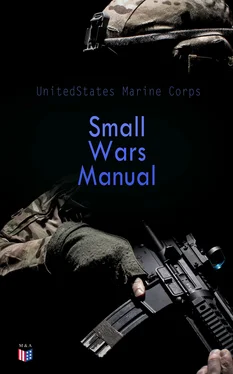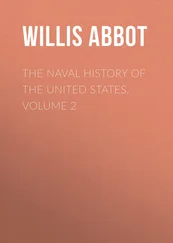The use of force against a foreign and friendly state, or against anyone within the territories thereof, is illegal. The right of self-preservation, however, is a right which belongs to states as well as to Individuals, and in the case of states it includes the protection pf the state, its honor, and its possessions, and lives and property of its citizens against arbitrary violence, actual or impending, whereby the state or its citizens may suffer irreparable injury. The conditions calling for the application of the right of self-preservation cannot be defined beforehand, but must be left to the sound judgment of responsible officers, who are to perform their duties in this respect with all possible care and forbearance. In no case shall force be exercised in time of peace otherwise than as an application of the right of self-preservation as above defined. It must be used only as a last resort, and then only to the extent which is absolutely necessary to accomplish the end required. It can never be exercised with a view to inflicting punishment for acts already committed.
Whenever, iii the application of the above-mentioned principles, it shall become necessary to land an armed force in foreign territory on occasion of political disturbance where the local authorities are unable to give adequate protection to life and property, the assent of such authorities, or of some one of them, shall first be obtained, if it can be done without prejudice to the interests involved. Due to the ease with which the Navy Department can be communicated from all parts of the world, no commander in chief, flag officer, or commanding officer shall issue an ultimatum to the representative of any foreign government, or demand the performance of any service from any such representative that must be executed within a limited time, without first communicating with the Navy Department except in extreme cases where such action is necessary to save life. (U. S. Navy Regulations. NR. 722, 723, and 724.)
c. The use of the forces of the United States in foreign countries to protect the lives and property of American citizens resident in those countries does not necessarily constitute an act of war, and is, therefore, not equivalent to a declaration of war. The President, as chief executive of the nation, charged with the responsibility of the lives and property of United States citizens abroad, has the authority to use the forces of the United States to secure such protection in foreign countries.
d. The history of the United States shows that in spite of the varying trend of the foreign policy of succeeding administrations, this Government has interposed or intervened in the affairs of other states with remarkable regularity, and it may be anticipated that the same general procedure will be followed in the future. It is well that the United States may be prepared for any emergency which may occur whether it is the result of either financial or physical disaster, or social revolution at home or abroad. Insofar as these conditions can be predicted, and as these plans and preparations can be undertaken, the United States should be ready for either of these emergencies with strategical and tactical plans, preliminary preparations, organization, equipment, education, and training.
1-4. Functions of headquarters Marine Corps.
Table of Contents
a. Small wars, generally being the execution of the responsibilities of the President in protecting American interests, life and property abroad, are therefore conducted in a manner different from major warfare. In small wars, diplomacy has not ceased to function and the State Department exercises a constant and controlling influence over the military operations. The very inception of small wars, as a rule, is an official act of the Chief Executive who personally gives instructions without action of Congress.
b. The President, who has been informed of a given situation in some foreign country through the usual agencies at his disposal, makes the decision concerning intervention. In appropriate cases this decision is communicated to the Secretary of the Navy. The senior naval officer present in the vicinity of the disturbance may then be directed to send his landing force ashore, or given authority to do so at his discretion ; the Marine Corps may be ordered to have an expeditionary force ready to proceed overseas with the minimum delay. These instructions are communicated to the Marine Corps via the Secretary of the Navy or Assistant Secretary. Frequently a definite number of men is called for and not a military organization; for example, 500 men (not one battalion). It is desirable, however, that a definite military organization which approximates the required strength and characteristics for accomplishing the mission be specified, such as one infantry battalion; one infantry regiment (plus one motor transport platoon), etc. The word often comes very suddenly and calls for the immediate concentration of the forces, ready to take passage on a certain transport which will be made available at a given time and place. Generally there are no other instructions than that the force shall report to * * *, “the Commander Special Service Squadron,” for example. Thereupon Headquarters Marine Corps designates the force, its personnel, organization, arms, and equipment; all necessary stores are provided and orders issued for the commanding officer of the force to report in person or by dispatch to the SOP or other authority in the disturbed area. With the present organized Fleet Marine Force ready for movement at a moment’s notice, the Marine Corps now has available a highly trained and well equipped expeditionary force for use in small wars, thus eliminating in a large measure the former practice of hastily organizing and equipping such a force when the emergency arose. Accompanying these simple organization and movement orders are the monograph, maps, and other pertinent intelligence data of the disturbed area, to the extent that such information is on file and can be prepared for delivery to the Force Commander within the time limit. Thereafter Headquarters confines itself to the administrative details of the personnel replacements and the necessary supply of the force in the field.
c. The operations of the Force are directed by the Office of the Naval Operations direct or through the local naval Commander if he is senior to the Force Commander.
1-5. Phases of small wars.
Table of Contents
a. Small wars seldom develop in accordance with any stereotyped procedure. Certain phases of those listed below may be absent in one situation; in another they may be combined and undertaken simultaneously; in still others one may find that the sequence of events or phases may be altered.
The actual operations of small wars may be arbitrarily divided into five phases as follows:
Phase 1. Initial demonstration or landing and action of vanguard.
Phase 2. The arrival of reenforcements and general military operations in the field.
Phase 3. Assumption of control of executive agencies, and cooperation with the legislative and judicial agencies.
Phase 4. Routine police functions.
Phase 5. Withdrawal from the Theater of Operations.
b. First phase.—Initial demonstration or landing and action of vanguard. .
(1) One of the most common characteristics of the small wars of the United States is that its forces “dribble in” to the countries in which they intervene. This is quite natural in view of the national policy of the government. It is not at war with the neighboring state; it proposes no aggression or seizure of territory; its purpose is friendly and it wishes to accomplish its objectives with as little military display as possible with a view to gaining the lasting friendship of the inhabitants of the country. Thus our Government k observed endeavorin'? to accomplish its end with the minimum of troops, in fact, with nothing more than a demonstration of force if that is all that is necessary and reasonably sufficient. This policy is carried on throughout the campaign and reenforcements are added by “driblets,” so many companies, or a battalion, or a regiment al a time, until the force is large enough to accomplish its mission or until its its peacetime limitations in personnel have been reached. Even after landing, instructions probably will be received not to exert any physical force unless it becomes absolutely necessary, and then only to the minimum necessary to accomplish its purpose. Thus orders may be received not to fire on irregulars unless fired upon; instructions may be issued not to fire upon irregular groups if women are present with them even though it is known that armed women accompany the irregulars.
Читать дальше












